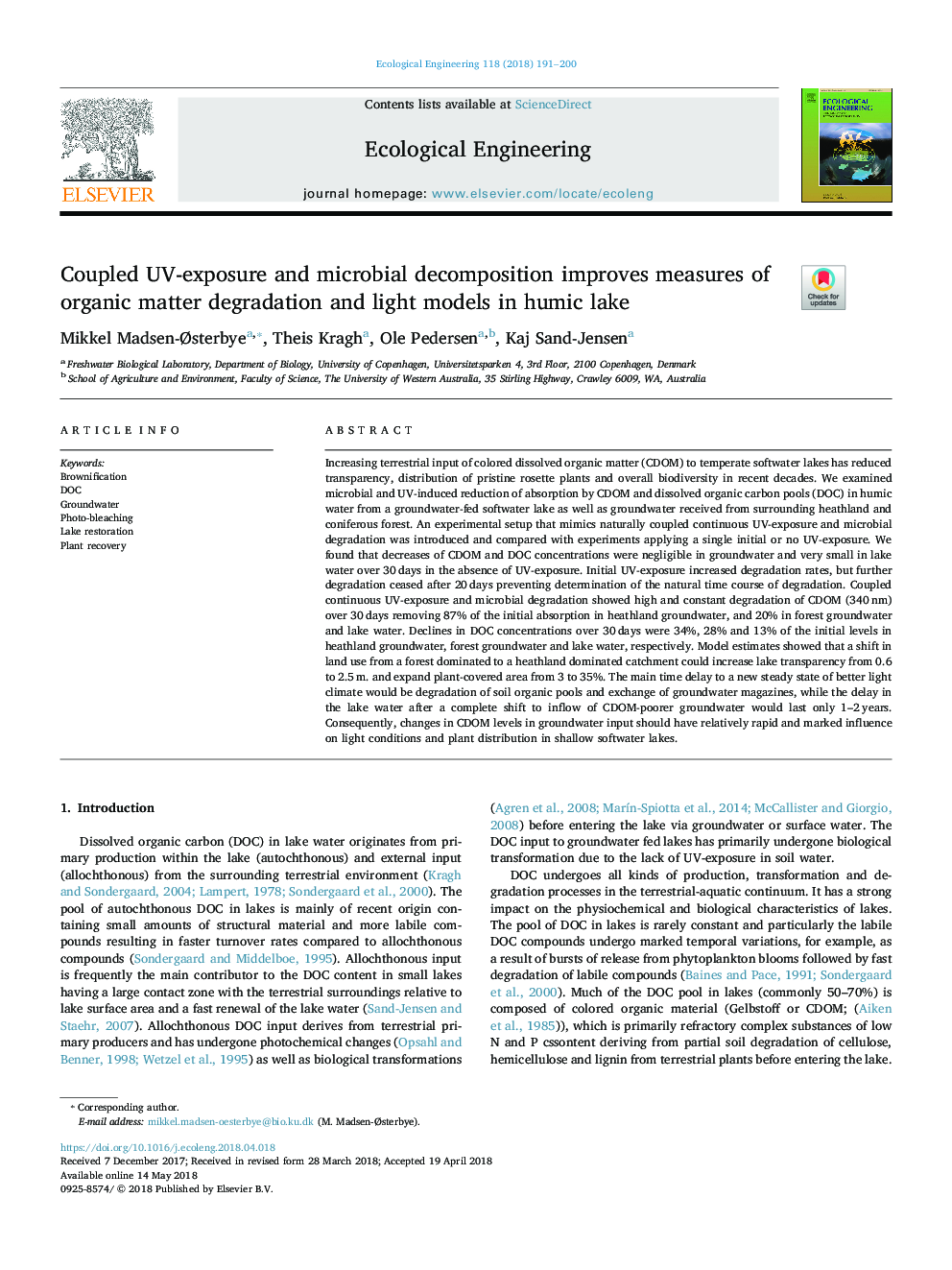| کد مقاله | کد نشریه | سال انتشار | مقاله انگلیسی | نسخه تمام متن |
|---|---|---|---|---|
| 8847857 | 1617984 | 2018 | 10 صفحه PDF | دانلود رایگان |
عنوان انگلیسی مقاله ISI
Coupled UV-exposure and microbial decomposition improves measures of organic matter degradation and light models in humic lake
ترجمه فارسی عنوان
در معرض قرار گرفتن در معرض اشعه ماوراء بنفش و تجزیه میکروبی، اندازه گیری های تجزیه مواد ارگانیک و مدل های سبک در دریاچه هومیک
دانلود مقاله + سفارش ترجمه
دانلود مقاله ISI انگلیسی
رایگان برای ایرانیان
کلمات کلیدی
موضوعات مرتبط
علوم زیستی و بیوفناوری
علوم کشاورزی و بیولوژیک
بوم شناسی، تکامل، رفتار و سامانه شناسی
چکیده انگلیسی
Increasing terrestrial input of colored dissolved organic matter (CDOM) to temperate softwater lakes has reduced transparency, distribution of pristine rosette plants and overall biodiversity in recent decades. We examined microbial and UV-induced reduction of absorption by CDOM and dissolved organic carbon pools (DOC) in humic water from a groundwater-fed softwater lake as well as groundwater received from surrounding heathland and coniferous forest. An experimental setup that mimics naturally coupled continuous UV-exposure and microbial degradation was introduced and compared with experiments applying a single initial or no UV-exposure. We found that decreases of CDOM and DOC concentrations were negligible in groundwater and very small in lake water over 30â¯days in the absence of UV-exposure. Initial UV-exposure increased degradation rates, but further degradation ceased after 20â¯days preventing determination of the natural time course of degradation. Coupled continuous UV-exposure and microbial degradation showed high and constant degradation of CDOM (340â¯nm) over 30â¯days removing 87% of the initial absorption in heathland groundwater, and 20% in forest groundwater and lake water. Declines in DOC concentrations over 30â¯days were 34%, 28% and 13% of the initial levels in heathland groundwater, forest groundwater and lake water, respectively. Model estimates showed that a shift in land use from a forest dominated to a heathland dominated catchment could increase lake transparency from 0.6 to 2.5â¯m. and expand plant-covered area from 3 to 35%. The main time delay to a new steady state of better light climate would be degradation of soil organic pools and exchange of groundwater magazines, while the delay in the lake water after a complete shift to inflow of CDOM-poorer groundwater would last only 1-2â¯years. Consequently, changes in CDOM levels in groundwater input should have relatively rapid and marked influence on light conditions and plant distribution in shallow softwater lakes.
ناشر
Database: Elsevier - ScienceDirect (ساینس دایرکت)
Journal: Ecological Engineering - Volume 118, 1 August 2018, Pages 191-200
Journal: Ecological Engineering - Volume 118, 1 August 2018, Pages 191-200
نویسندگان
Mikkel Madsen-Ãsterbye, Theis Kragh, Ole Pedersen, Kaj Sand-Jensen,
